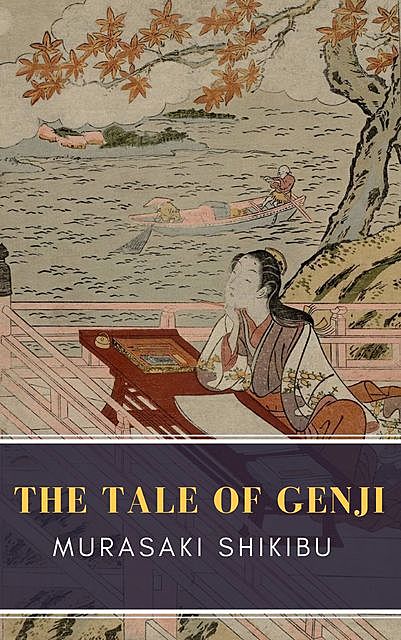

Lady Murasaki Shikibu wrote this story some 500 years before Shakespeare put pen to paper. Though wary of his motivations at first, she becomes the true love of Genji's life. His romantic life with Murasaki, Fujitsubo's beautiful niece and Genji's favored lover.

His lifelong obsession with Fujitsubo, one of the emperor's lovers and mother to Genji's son Ryozen. His birth in the royal court to Kiritsubo, who comes to represent Genji's ideal of female beauty and grace. In this beautifully illustrated edition, Genji's story comes alive as readers experience: His story is the oldest and most famous tale of romance in the annals of Japanese literature and, as a representation of passion and romance, remains beyond compare. Handsome, romantic, and talented in the art of seduction, Prince Genji skillfully navigates the court and all its intrigues-always in search of love and often finding it. Friendship Commission Prize for the Translation of Japanese Literature for his translation of Kawakami Hiromi's novel Manazuru.Tale of Genji, the world's oldest known novel, tells the story of Prince Genji and his adventures in life, love, and power within the halls of the Chrysanthemum Royal Court. He is the author of The Tale of Genji: Translation, Canonization, and World Literature, the editor of Read Real Japanese Fiction: Short Stories by Contemporary Writers and New Penguin Parallel Texts: Short Stories in Japanese, and the translation of numerous works of premodern, modern and contemporary Japanese Literature. Michael Emmerich is Associate Professor of Japanese literature at the University of California, Los Angeles.

After the death of her husband, Murasaki Shikibu immersed herself in Buddhism, and the religion's influences permeate her writing.

Her literary ability quickly won her a place in the entourage of the Empress Akiko, whose court valued the rare woman who was a master of writing. Lady Murasaki Shikibu, born in the year 978, was a member of the famed Fujiwara clan-one of the most influential families of the Heian period. Condensed, it's a quarter length of the unabridged text, making it perfect for readers with limited time. This version by Kencho Suematsu was the first-ever translation in English. This book has influenced not only generations of courtiers and samurai of the distant past, but artists and painters even in modern times-episodes in the tale have been incorporated into the design of kimonos and handicrafts, and the four-line poems called waka which dance throughout this work have earned it a place as a classic text in the study of poetry. The Tale of Genji follows Prince Genji through his many loves and varied passions. Genji is also a master poet, dancer, musician and painter. Prince Genji manifests what was to become an image of the ideal Heian era courtier gentle and passionate. Lady Murasaki Shikibu and her tale's hero, Prince Genji, have had an unmatched influence on Japanese culture. Written centuries before the time of Shakespeare and even Chaucer, The Tale of Genji marks the birth of the novel-and after more than a millennium, this seminal work continues to enchant readers throughout the world. The most famous work of Japanese literature and the world's first novel-written a thousand years ago and one of the enduring classics of world literature.


 0 kommentar(er)
0 kommentar(er)
